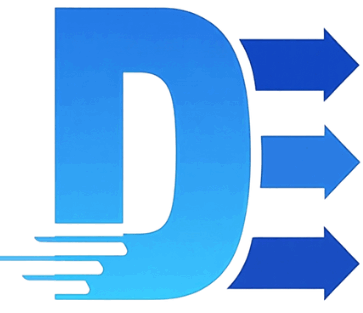
In today’s hyper-connected world, digital devices play a vital role in work, relationships, and entertainment. However, constant connectivity can also lead to stress, burnout, and unhealthy lifestyle habits. This is why creating a personalized digital wellness plan is essential. Such a plan helps you set boundaries, prioritize real-life connections, and make technology work for you instead of controlling you.
A digital wellness plan is not one-size-fits-all. It should reflect your lifestyle, goals, and values. Here’s a step-by-step approach to designing one that genuinely works for you.
Why You Need a Digital Wellness Plan
Before creating your plan, it’s important to understand why it matters. Overuse of digital devices can lead to:
- Sleep disturbances from blue light exposure
- Reduced productivity due to constant notifications
- Mental fatigue from multitasking and screen overload
- Weaker relationships from distraction during family time
A wellness plan helps you balance the benefits of technology with the need for mental clarity, healthier habits, and stronger personal connections.
Steps to Create Your Personalized Plan
1. Assess Your Current Digital Habits
Begin by reflecting on how you currently use your devices.
- How many hours do you spend daily on screens?
- Which apps or platforms consume most of your time?
- Do you feel energized or drained after using technology?
Self-awareness is the foundation for meaningful changes.
2. Set Clear Wellness Goals
Decide what you want to achieve. Goals could include:
- Reducing screen time before bed
- Improving focus at work
- Spending more offline time with family
- Using social media more mindfully
Make sure your goals are specific, measurable, and realistic.
3. Create Boundaries and Rules
Boundaries are crucial for reclaiming balance. Examples include:
- No phones during meals
- Tech-free mornings or evenings
- Designated screen-free zones in the house
- Limiting social media scrolling to 30 minutes a day
4. Choose Healthy Digital Practices
Integrate habits that promote balance, such as:
- Using screen-time management apps
- Turning off non-essential notifications
- Practicing the 20-20-20 rule (every 20 minutes, look 20 feet away for 20 seconds)
- Scheduling short “digital detox” breaks throughout the day
5. Prioritize Offline Activities
Replace excessive screen use with healthier alternatives:
- Reading physical books
- Outdoor exercise or walks
- Board games with family
- Mindfulness practices like journaling or meditation
6. Track and Adjust Progress
A plan is only effective if you monitor progress. Use apps, journals, or trackers to measure changes in screen time, productivity, or stress levels. Adjust your plan regularly to fit your evolving lifestyle.
Table: Elements of a Personalized Digital Wellness Plan
| Step | Action to Take | Benefit Achieved |
|---|---|---|
| Assess Digital Habits | Track screen time and app usage | Self-awareness and clarity |
| Set Wellness Goals | Define clear and realistic objectives | Motivation and direction |
| Establish Boundaries | No devices during meals or before bedtime | Better focus and stronger connections |
| Healthy Digital Practices | Turn off notifications, use apps mindfully | Reduced stress and distraction |
| Offline Alternatives | Exercise, reading, journaling | Improved mental and physical health |
| Track & Adjust | Regularly review habits and progress | Long-term sustainability |
Tips for Success
- Start small: Focus on one or two areas at a time instead of trying to change everything at once.
- Involve family or friends: Shared goals create accountability and make it easier to stick to routines.
- Reward yourself: Celebrate milestones like reducing weekly screen time or maintaining tech-free dinners.
- Be flexible: Adjust the plan when necessary, especially during busy work seasons or family events.
Long-Term Benefits of a Digital Wellness Plan
By sticking to your personalized plan, you can expect:
- Better sleep quality from reduced screen exposure before bedtime
- Higher productivity by limiting distractions during work hours
- Stronger relationships through more mindful, in-person connections
- Improved mental health with less stress and digital fatigue
- More free time to engage in hobbies, fitness, or self-care activities
Overview Table
| Focus Area | Change Implemented | Long-Term Benefit |
|---|---|---|
| Sleep | No screens 1 hour before bed | Better rest and energy levels |
| Productivity | Turn off work notifications at night | Improved focus and efficiency |
| Relationships | Tech-free meals with family | Stronger personal connections |
| Stress Management | Scheduled mindfulness breaks | Reduced anxiety and improved mood |
| Physical Health | More offline movement & exercise | Increased fitness and vitality |
| Balance | Weekly digital detox day | Greater life satisfaction |
Final Thoughts
Creating a personalized digital wellness plan is not about rejecting technology—it’s about using it intentionally. By setting boundaries, replacing harmful habits with healthier ones, and monitoring progress, you can reclaim your time and mental clarity. Remember, wellness is a journey, not a quick fix. Your plan should evolve with your lifestyle, ensuring that digital devices enhance your life instead of overwhelming it.
3 Quick FAQs
Q1. How do I know if I need a digital wellness plan?
If you often feel drained, distracted, or spend too much time on screens, a wellness plan can help restore balance.
Q2. Do I need special apps to create a plan?
No, but tracking apps and screen-time tools can make the process easier and more effective.
Q3. Can I still enjoy social media with a wellness plan?
Absolutely—just set limits and use it mindfully instead of letting it consume your time.

